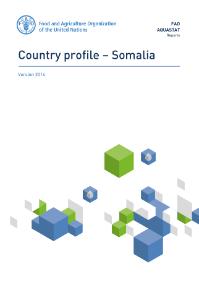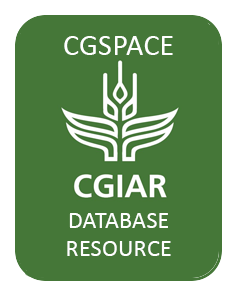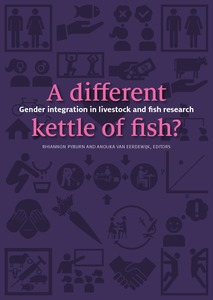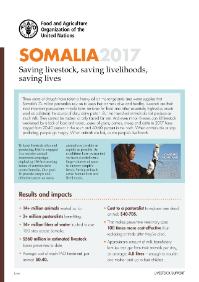This country profile describes the state of the water resources and water use, as well as the state of agricultural water management in Somalia. The aim of this report is to describe the particularities of the country and the problems met in the development of the water resources, and irrigation…
Three years of drought have taken a heavy toll on the rangelands and water supplies that Somalia’s 7+ million pastoralists rely on to keep their animals alive and healthy. Livestock are their most important possessions – trade items bartered for food and other essentials; high-value assets used…
Somalia, one of the world's poorest countries, has livestock as the mainstay of the economy, with an estimated 65% of the population engaged in the livestock sector. This paper presents a gendered study on the traditional livestock breeding practices of Somali pastoralists for camels,…
Since the 1960s, FAO has taken the lead in the fight against hunger in Somalia, supporting the Government and rural communities in times of crisis as well as in pursuit agricultural development goals. Special attention is devoted to helping rural communities withstand recurrent shocks, such as…
Meeting Name: Commission on Genetic Resources for Food and Agriculture (CGRFA)
Meeting symbol/code: CGRFA-16/17/16
Session: Sess.16
Meeting Name: Commission on Genetic Resources for Food and Agriculture (CGRFA)
Meeting symbol/code: CGRFA-16/17/16
Session: Sess.16
In the Sahel, around 65 percent of the active population works in the agriculture sector and their livelihoods are therefore affected by climate change, markets and environmental factors. More than half of these are women. Recurring crises pose real concerns for the achievement of sustainable…
The document is a compilation of up-to-date, existing knowledge on groundwater governance, developed by leading international scientists and experts within the framework of the GEF project “Groundwater Governance - A Global Framework of Action”. It covers nine selected themes that focus on…
Meeting Name: Commission on Genetic Resources for Food and Agriculture (CGRFA)
Meeting symbol/code: CGRFA-16/17/16
Session: Sess.16
Meeting Name: FAO Regional Conference for Africa (ARC)
Meeting symbol/code: ARC/16/INF/16
Session: Sess. 29






